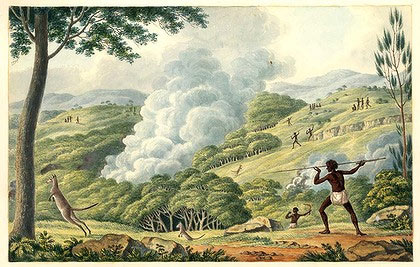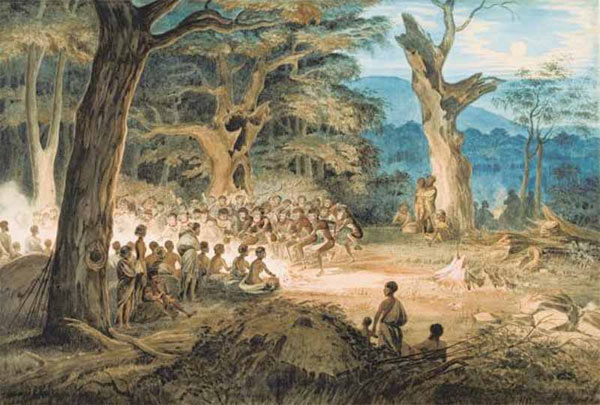Ancient Indigenous Practices of Australia Kept Nature in Harmony
For tens of thousands of years, the Aboriginal people of Australia lived in a deeply symbiotic relationship with nature. In what may seem like a contradiction, a recent study revealed how Aboriginal hunters use a particular method that increases the populations of the animals they hunt.
The study, published in Proceedings of the Royal Society B, provided insights into how the indigenous people have maintained animal populations through ecosystem engineering and the co-evolution of animals and humans.
Aboriginals use a hunting method in which they use fire to clear areas of land to improve the search for game. This promotes regrowth which enhances the habitat, leading to an increase in the numbers of animals that are being hunted. For example, the populations of monitor lizards nearly double in areas where they are heavily hunted. Where there are no hunters, fires sparked by lightning storms spread over huge distances, landscapes are more homogenous and monitor lizards are rarer.

Joseph Lycett's 1817 watercolour, Aborigines Using Fire to Hunt Kangaroos, depicts the innovative use of fire burning. Photo: National Library
Following the persecution of the Aboriginal people and the loss of traditional practices after Australia was colonised, there was a decline in aboriginal hunting and burning, particularly in the mid-20 th century. It is believed that this contributed to the extinction of many species that had come to depend on the traditional practices that may have been implemented for thousands of years. Similarly, Native Americans in California believe that policies preventing them from tribal burning of many types of habitat have contributed to native species decline.
"Our results show that humans can have positive impacts on other species without the need for policies of conservation and resource management," said Rebecca Bird, associate professor of anthropology at the Stanford Woods Institute. "In the case of indigenous communities, the everyday practice of subsistence might be just as effective at maintaining biodiversity as the activities of other organisms."
Martu, an aboriginal community in Australia’s Western Desert who were the focus of the study, shared information about their hunting practices. They refer to their relationship with nature as part of ‘jukurr’ (‘Dreaming’). While ‘the Dreaming’ has often been thought to guide sacred and religious belief and practices, the knowledge and the rituals are also a form of practical philosophy which in many cases have been found to be consistent with scientific understanding. According to ‘jukurr’, land must be used for life to continue.
Modern-day civilizations have a lot to learn from the indigenous populations who lived in harmony with nature for millennia. Adopting indigenous practices for land management could go a long way in conserving and restoring some of the damage that has been done to Earth’s ecosystems.
Featured image: A ceremonial meeting of Aboriginal Australians, known as a corroboree. Photo source.



















